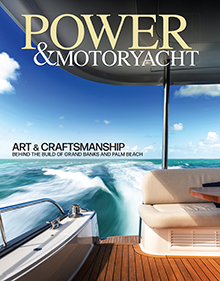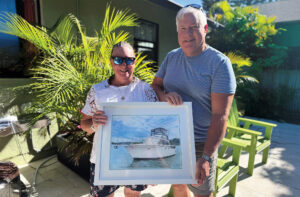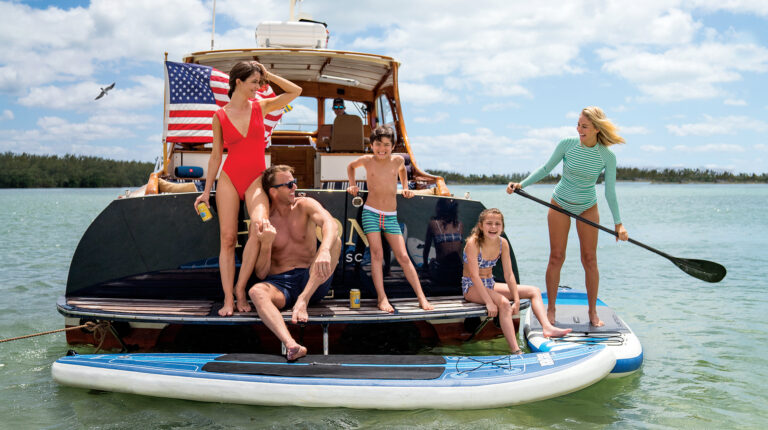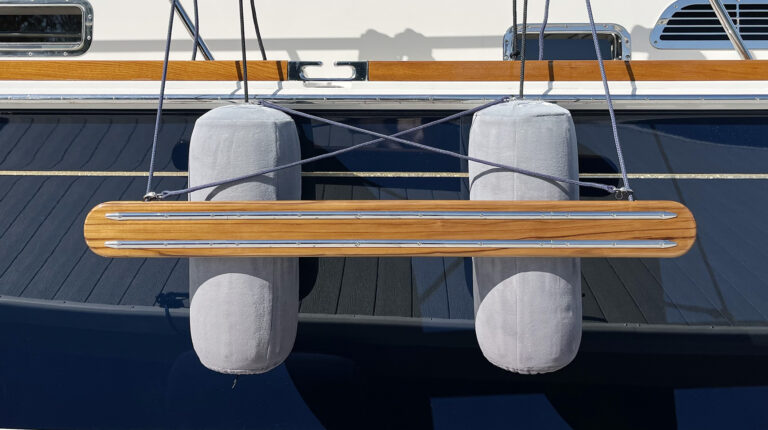Turn it Up
Cost: $250 to $850


Remember how it was in the old days?
About all you could expect from a marine
stereo was AM/FM radio reception, a
cassette function, and if you were really
on the cutting edge, a long rectangular
slot at the top of the control head into
which you could feed a new-fangled
contraption called a CD.
These days the basic stereo options are
so numerous they’re darn near confusing.
Check out a basic Clarion stereo. Even an
incomplete list of availabilities is likely to
include various MP3 player hookups
(with iPod docking stations), XM and
Sirius radio, CD-R disc compatibility,
and a USB interface, as well as shock
protection for smooth playback in
rough seas. Add to all these LCD
displays that show ID3 tags and file
information (for song titles, artist’s
name, etc.), wireless controls, and jacks
for Bluetooth technology, and we’re
talking a level of digital listening
pleasure well beyond anything you’ve
heard aboard your boat.
Speakers are way better than they
used to be as well. High-end equipment
typically handles peak power with
aplomb and offers extra-responsive
water-resistant polypropylene woofers
and tweeters that’ll blow your
earphones off by comparison with
speakers of yesteryear.
And just in case you’re not willing to
spring for an entirely new system with a
multi-function control head and a juicy
set of speakers, check what you’re
listening to now. If it’s not too old, it
will most likely have an input jack for
an iPod or other MP3 players on the
back. Check your favorite marine
discount catalog. You’ll probably be
able to buy an iPod adapter cord from
your unit’s manufacturer.
—Capt. Bill Pike
Quiet Power
Cost: $35 to $2,600


Need to run the microwave but don’t
feel like going all out and buying a
genset? Or perhaps you already have a
genset but don’t want to fire it up every
time you need to make coffee. Either
way, what your boat needs is an inverter.
Depending what size you choose and the
capacity of your house-battery bank,
having one can allow you to run
everything electrical onboard, short of air
conditioning.
The West Marine catalogue divides
inverters into three types: portable,
mounted, and inverter-chargers. The
portable ones plug into your 12-volt
“cigarette lighter” receptacle and
generally max out at around 300 watts.
Mounted inverters are the way to go if
you need juice above this range—which
you do if you’re going to do anything
more that turn on a light or charge a
cellphone. But the most sophisticated
units double as battery chargers; they
need to be fully integrated into your
electrical system (with the help of a
professional) but truly do kill two birds
with one stone. Their large capacity—up
to 4,000 watts—can run your most
demanding systems such as freezers and
kitchen appliances, while the charger
component allows you to handle the
most sophisticated battery types, such as
gel cells and AGMs.
Selecting the right inverter depends on
your boat’s power demands. In computing
them, make sure to include the
surge power required to start many
electric motors and also be sure to talk
with a manufacturer sales representative
or a professional well versed in
inverters when picking one out.
Remember to follow West Marine’s
guidelines by “[connecting] to a battery
bank that is 20-percent as long in amp
hours as the inverter size in
watts.”
—Capt.Grant Rafter
This article originally appeared in the October 2009 issue of Power & Motoryacht magazine.










